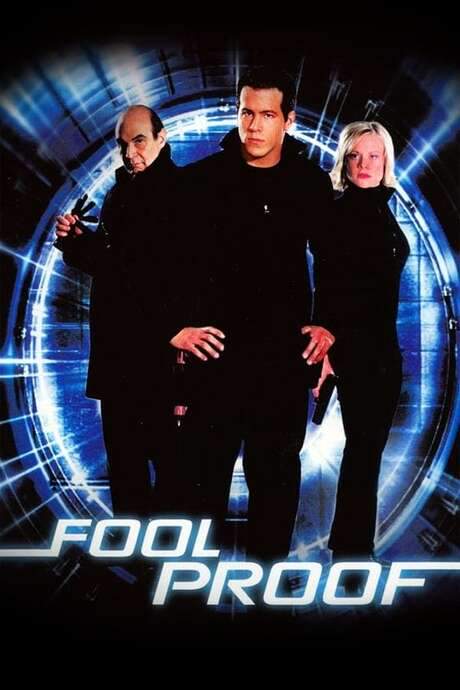
Hue and Cry
Year: 1947
Runtime: 82 mins
Language: English
Director: Charles Crichton
A clever street‑kid gang uncovers a criminal mastermind who covertly issues robbery instructions by subtly changing the dialogue of a weekly comic strip, a scheme the strip’s writer and printer never notice. Their daring foiling of the plot provides the light‑hearted, inventive comedy that launched Ealing Studios’ celebrated series of films.
Warning: spoilers below!
Haven’t seen Hue and Cry yet? This summary contains major spoilers. Bookmark the page, watch the movie, and come back for the full breakdown. If you're ready, scroll on and relive the story!
Hue and Cry (1947) – Full Plot Summary & Ending Explained
Read the complete plot breakdown of Hue and Cry (1947), including all key story events, major twists, and the ending explained in detail. Discover what really happened—and what it all means.
In a bombed-out post-war London neighborhood, a tight-knit group of teenage readers—the Blood and Thunder Boys—find solace in illustrated adventure stories from British boys’ magazines. Their leader, Joe Kirby, Harry Fowler, notices a troubling pattern: the very plots they read are being copied by a local crew who are rehearsing real-life robberies.
Joe takes the matter to the police, first approaching Inspector Ford, Jack Lambert, who treats the tip with a blend of humor and doubt. Yet Joe remains convinced something more is going on, so he brings the concern to his boss at work, Mr. Nightingale, Jack Warner. Nightingale’s curt reaction—to tell Joe to forget it—only steels Joe’s resolve rather than dulling his suspicion.
Resolute, Joe and another boy seek out the magazine’s reclusive author, Wilkinson, Alastair Sim. Inside Wilkinson’s world, they discover that the author’s carefully crafted wording is being altered somewhere between the drafting desk and the printing press. This strange redirection points to a controlled flow of information rather than random crime, and it becomes clear to the boys that the crimes are tightly tied to the stories they adore.
Their investigation narrows to a female employee of the publishing house, whom they track to a handsome suburban home in Hampstead. The confrontation is tense but unproductive; the woman offers no clear answers, and the trail seems to stall. Undeterred, the boys keep digging and eventually identify the drop location where the robbers stash their loot.
To turn the tables, the boys enlist Wilkinson’s help to craft a brand-new adventure tale—one designed to shepherd the criminals into a trap at the drop. The plan hinges on shifting the criminals’ expectations just enough to draw them out into the open, a narrative ruse that could expose the entire operation without tipping off the police too soon.
Joe then reports the evolving plan to Nightingale, only to realize—too late—that the man he trusted as his boss is, in fact, the mastermind behind the local crimes. The revelation reframes the entire operation: the supposed conflict between a boyish imagination and a criminal conspiracy is really a calculus of risk and power, with Nightingale as the architect behind the mischief.
The warehouse where the loot is kept becomes a stage for confrontation. A cache of fur coats and other pilfered goods is discovered, and Nightingale himself arrives with menacing intent. He threatens Joe, but the moment spirals into chaos as other crooks and toughs join the fray. Before order can fully take hold, hundreds of city boys answer a radio plea for help and surge into the scene, transforming the confrontation into a broad, boisterous showdown. Pandemonium gives way to the arrival of the police, who restore order and reclaim the situation.
In the aftermath, Joe tracks Nightingale to a bombed, multi-story building. What follows is a tense pursuit and a decisive showdown, culminating when Nightingale plunges through a floor hole, bringing the immediate danger to a dramatic close. The city’s wide-eyed youth, the mastermind’s fall, and the arrival of law enforcement converge to restore a fragile peace to the neighborhood, leaving the teens with a sense that stories—real and imagined—can shape outcomes as surely as any crime.
Last Updated: October 09, 2025 at 14:07
Unlock the Full Story of Hue and Cry
Don't stop at just watching — explore Hue and Cry in full detail. From the complete plot summary and scene-by-scene timeline to character breakdowns, thematic analysis, and a deep dive into the ending — every page helps you truly understand what Hue and Cry is all about. Plus, discover what's next after the movie.
Hue and Cry Timeline
Track the full timeline of Hue and Cry with every major event arranged chronologically. Perfect for decoding non-linear storytelling, flashbacks, or parallel narratives with a clear scene-by-scene breakdown.

Similar Movies to Hue and Cry
Discover movies like Hue and Cry that share similar genres, themes, and storytelling elements. Whether you’re drawn to the atmosphere, character arcs, or plot structure, these curated recommendations will help you explore more films you’ll love.
Explore More About Movie Hue and Cry
Hue and Cry (1947) Scene-by-Scene Movie Timeline
Hue and Cry (1947) Movie Characters, Themes & Settings
Hue and Cry (1947) Spoiler-Free Summary & Key Flow
Movies Like Hue and Cry – Similar Titles You’ll Enjoy
Deep Cover (2025) Story Summary & Characters
The Gentlemen (2019) Full Movie Breakdown
Nos amis les flics (2004) Film Overview & Timeline
Foolproof (2003) Full Movie Breakdown
A Cheerful Gang Turns the Earth (2006) Movie Recap & Themes
All the Wrong Clues (1981) Movie Recap & Themes
Cry Danger (1951) Full Movie Breakdown
Fighting Trouble (1956) Film Overview & Timeline
11 Harrowhouse (1974) Full Movie Breakdown
Limehouse Blues (1934) Full Movie Breakdown
Hyde and Sneak (1962) Detailed Story Recap
Loose in London (1953) Detailed Story Recap
The League of Gentlemen (1960) Story Summary & Characters
To Be a Crook (1965) Full Movie Breakdown
The Wrong Arm of the Law (1963) Complete Plot Breakdown

















